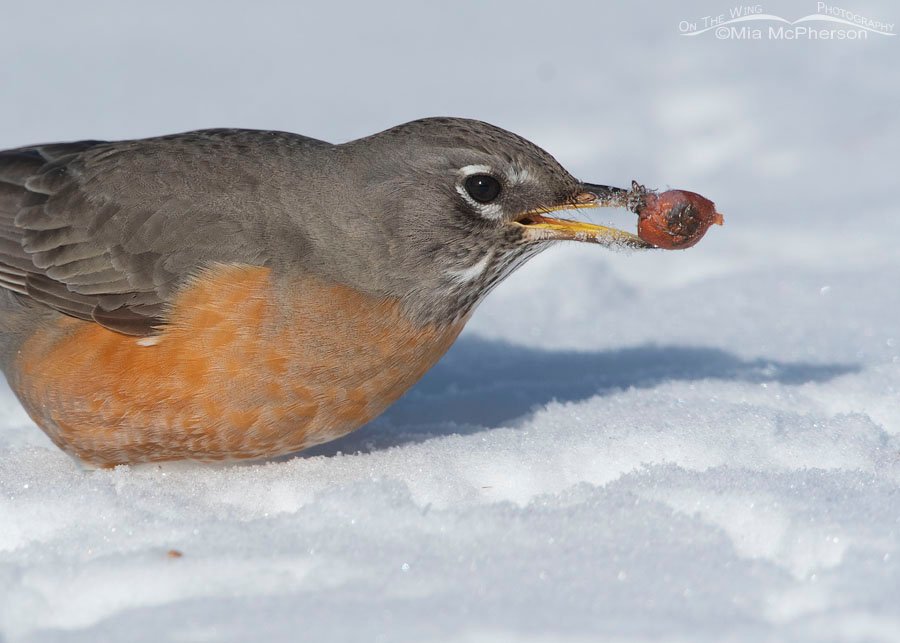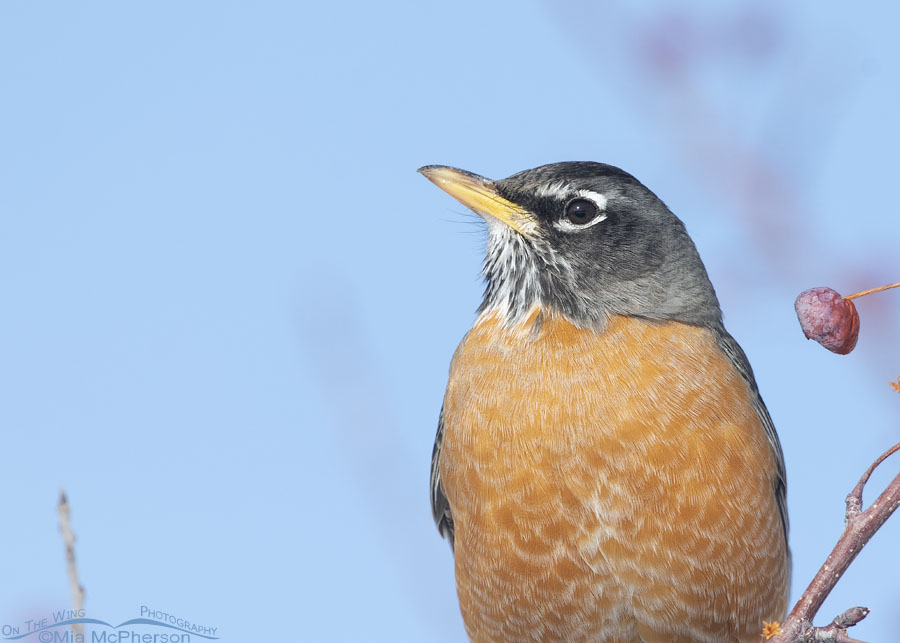 Winter American Robin foraging in snow – Nikon D500, f8, 1/2500, ISO 400, +0.3 EV, Nikkor 500mm VR with 1.4x TC, natural light
Winter American Robin foraging in snow – Nikon D500, f8, 1/2500, ISO 400, +0.3 EV, Nikkor 500mm VR with 1.4x TC, natural light
Happy Solstice and Yuletide! Hello Winter! Happy return to the light!
This is the astronomical first day of winter in the Northern Hemisphere and the shortest day of the year. The first day of astronomical winter in the Northern Hemisphere is marked by the winter solstice, which occurs on Tuesday, December 21, 2021, at 10:59 A.M. EST, 8:59 A.M. MST. After today the days begin to grow longer and longer. The Solstice only lasts a moment but many of us celebrate it the whole day long.
Did you know that on the Solstice you cast your longest shadow of the year in the Northern Hemisphere? That is because of the sun is the lowest and most southerly on the horizon on this day of the year in the Northern Hemisphere.
 American Robin against a winter sky – Nikon D500, f7.1, 1/1250, ISO 400, +0.7 EV, Nikkor 500mm VR with 1.4x TC, natural light
American Robin against a winter sky – Nikon D500, f7.1, 1/1250, ISO 400, +0.7 EV, Nikkor 500mm VR with 1.4x TC, natural light
The start of winter always make me think of birds and wildlife and how tough they are to survive this time of the year. I know that for some people the American Robin is thought to be the harbinger of spring but I see them year round here in the Salt Lake Valley and in large numbers during the winter. I selected these two American Robin photos to go with this post on the Solstice because I often get closer to foraging robins during the winter than I do at other times of the year.
Winter can be a terrific time in northern Utah for bird photography because the winter light is pleasing longer into the day because it is low on the horizon. I can photograph birds almost all day long without harsh shadows. Winter light is a delight and if there is snow on the ground it only gets better and for me that is a reason to celebrate.
Happy Solstice everyone.
Life is good.
Mia
Click here to see more of my American Robin photos plus facts and information about this species.


Beautiful portraits! The 2nd pic is a real showstopper; the detail and color you captured is incredible. Thanks Mia.
Your photography is definitely a reason to celebrate! Happy Winter Solstice! ❄️
Happy solstice…my favorite!
Happy Solstice to you. And how I envy your winter. Summer is my least favourite time of year – and also hard on our wildlife.
I love the robins. It reminds me I have not been over to the cemetery in over a year. They closed it for an entire year due to downed trees and damage in September 2020. Since I did not make it to Antelope Island this morning maybe I will try the cemetery this afternoon. My our winter be snow filled, sorry birds but we need it.
Was going to go out and see my longest shadow of the year, but it’s raining. Sigh.
Happy Winter Solstice to you, too, Mia!
Still waiting to see our first robins of the winter. Any day now.